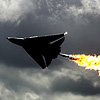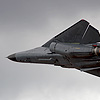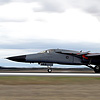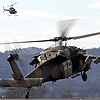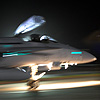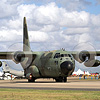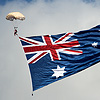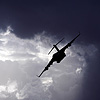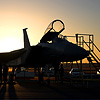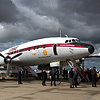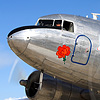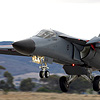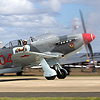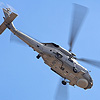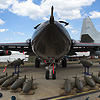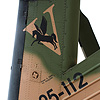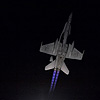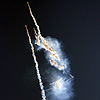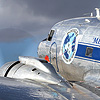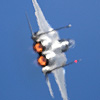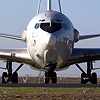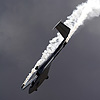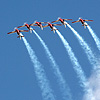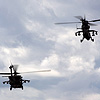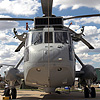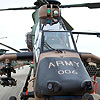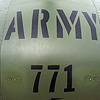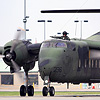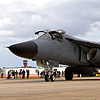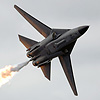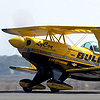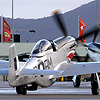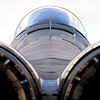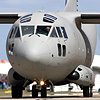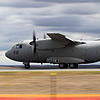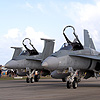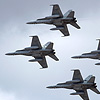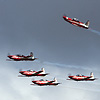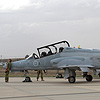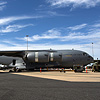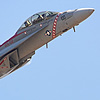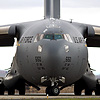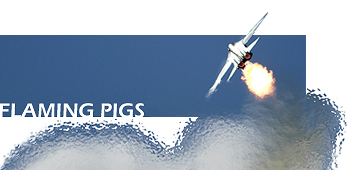
Australian International Airshow 2007 Review
Tuesday 20th March - Sunday 25th March
"Breaking the Barriers" was the official theme of the 2007 Australian International Airshow and seems a fitting title for a country whose aviation industry is trying to push out the boundaries. Australia has been a key ally to the US and the Coalition, in the "War on Terror", with a commitment from the Australian government in supporting operations in both Afghanistan and Iraq. With the recent announcement from Canberra of the AU$6 billion (Australian) acquisition of 24 Boeing F/A-18F Super Hornets, the Australian government is backing up its commitment with ensuring its forces are equipped for the job.
brings UKAR an exclusive report from 'down under'. All photography by the author.
The Australian Defence Force (ADF) has seen some major investment over recent years. Early 2006, it was announced that the Royal Australian Air Force (RAAF) would receive up to 4 C-17 Globemaster III aircraft to finally give the ADF the much needed heavy airlift capability it has longed for. The 1st C-17 arrived in Australia early December 2006 and was used almost immediately with its first operational mission in January 2007 supporting the RAAF's commitment to Exercise Red Flag in Nevada.
The RAAF is not seeing all the investment; both the Navy and the Army are both receiving a high level of new equipment. The Army is set to dramatically improve its reconnaissance, fire support and troop lift capabilities with the arrival of both the Eurocopter Tiger Armed Reconnaissance Helicopter (ARH) and with the arrival, later in 2007, of the first MRH-90 troop lift helicopters replacing the aging Iroquois (Huey) helicopters.
The Australian civil aviation sector is also seeing some major change with Qantas being the subject of a AU$11.1 billion take-over bid and Virgin Blue expanding its business after seeing full year profit predictions rise 60%. Virgin Blue is pulling away from just low cost airline operations and setting its sights on becoming a new world carrier, hoping to launch trans-pacific flights to the US from 2008. Australian industry is also heavily involved with Boeing's 787 Dreamliner project, with some 115 local suppliers getting involved in the work. Boeing Australia employs around 2400 staff, making it the biggest Boeing subsidiary outside the US.
All this attention on the Australian aviation industry is just what the Australian government has been hoping for after the launch, three years ago, of the government & industry initiated Aerospace Industry Action Agenda, designed "to improve the health and competitiveness of a declining industry in Australia".
The entire industry gathered for the 8th Australian International Airshow, held at Avalon Airport, some 50 kilometres south of Melbourne, with the sole purpose of breaking even more barriers.
The Airshow, held at Avalon every two years, is an important world event for the aerospace industry in Australia and the largest of its kind in the southern hemisphere. A strong aerospace industrial presence is always felt at the Exposition: from the 1st show in 1992, some 226 exhibitors from 12 countries attended and this year's presence is ever stronger, with almost 600 exhibitors, representing all the major key players from all over the world. This year also incorporates for the first time, LanDef, a land defence and ground warfare exhibition.
The 2005 event attracted some 170,000 people during the public days and participating aircraft was at an all time high. This year's event was expected to surpass that with an expected crowd of some 200,000 people over the two and half public days. The show attracts aircraft from all parts of the spectrum; including business jets & general aviation to combat aircraft, historic warbirds and experimental aircraft. All the Australian Armed Forces were represented, from the fast jets & transports of the RAAF, to the helicopters of both the Navy and Army. The United States Air Force (USAF) was also a major contributor to the show; arriving to kick off celebrations of its 60th Anniversary of full independence from the US Army. Two F/A-18F Super Hornets from the US Navy accompanied the USAF to showcase the capabilities of Australia's new strike aircraft. Other performers included Jim LeRoy in his Bulldog Pitts and Bob Carlton in his silent jet powered glider plus the Historic Aircraft Restoration's Super Constellation and many more.
The show began on Tuesday 20th March, kicking off the 1st of 4 trade show days. The first public display began on the afternoon of Friday 23rd March followed by the two full public display days on the Saturday and Sunday. The show relies heavily on a near-all volunteer force. People come from all over Australia and even the world to volunteer for one of the hundreds of roles available. Australia has a long history of staging world events and the reason why is the people; be it the Airshow at Avalon, the Commonwealth games in 2006 or even the Olympics; Australia has a great volunteering culture, where everyone lends a hand. The people make these shows happen, without them; these huge events would simply not even leave the ground.
The International Aerospace and Defence Exposition at this year's Airshow was the biggest yet. The purpose of the Exposition is to promote the development of aviation and Australian industrial, manufacturing and IT/communication technology resources as they apply to aerospace and defence. A large audience of representatives from all key aerospace and defence companies, from all over the world, are all brought together under the new enlarged Exposition area.
The official theme for the 2007 Australian International Airshow was "Breaking the Barriers," a celebration of the 60th Anniversary of General Charles "Chuck" Yeager breaking the sound barrier in the Bell X-1A. The great man himself was the Airshow's special guest. As already mentioned, this year also marks the 60th Anniversary of the formation of a fully independent US Air Force.
The Airshow is key for the ADF to show the world a slice of an ever-increasing capability. Some 600 representatives of the World's media were in attendance and a large number from other World Governments and Armed Forces were also present. As with all major trade shows, a lot of the work was done behind closed doors or through a number of major conferences and seminars. There were however, flying displays during the afternoon. There were both commercial and military flying through the 4 trade show days. Australia's own Gippsland Aeronautics displayed its GA-8 Airvan with HAL from India displaying its Hansa 4 training aircraft. Thankfully, the bigger guys pushed it up a few notches with both the RAAF and the USAF showing off their aircraft.
The displays were similar to what we would expect to see in the UK. The static display, from a photographer's point of few, was very disappointing. The main static display area was crammed with aircraft with very little space around them. It was more quantity than quality at times, which was rather disappointing. However, a number of the heavier aircraft such as the C-130H, RAAF 707, RAAF Caribou, RAAF C-17 and HAR's Super Connie and Neptune were accessible to the crowd. When the aircraft were preparing for their flying display, the crowd was quickly dispersed before the aircraft was towed into space to start its engines. This whole procedure was a bit of shock to the system, especially as a volunteer being involved in ensuring the safety of the crowd whilst this was happening! Another treat was aircraft taxiing back after a display, they would pass through two public crossovers meaning that the public got a close look at the aircraft and waving crew.
Flying displays were a little different mainly because of the fact that we don't generally get to see dump and burns from the F-111 in the UK! The F-16 display from the US Pacific Air Force was flown high and far from the crowd line and consisted of mainly fast passes down the runway. The F-15 and F-18 displays were somewhat different, both pilots putting their aircraft through their paces. The Navy's F-18 was flown again by test pilot Ricardo Traven. The RAAF, Army and Navy put on an excellent show, the highlight was most definitely the F-111 "Pig." The F/A-18 display team, the Green Lions and the aerobatic team, the Roulettes, displayed excellently too. The Army demonstrated a simulated battle sequence involving the Iroquois, Kiowa, Blackhawk and the new Tiger. The RAN displayed both the Seahawk and also the AS350 Squirrel Pair ("the Squirrel Dance"). There were also a number of excellent displays from some of the world's best known aerobatic pilots.
Boeing's Friday Night Alight show had a lot of potential but due to circumstances out of the Airshow's control turned out to be rather disappointing. The flying display involving a pair of F-111's doing a terrain following radar attack on the Airport and a pair of F/A-18 Hornets providing top cover support was delayed by some margin due to a Virgin Blue flight declaring a fuel critical emergency after bad weather at Melbourne's main international airport prevented it from landing. A divert was called to Avalon but the aircraft managed to safely land at Tullamarine Airport as planned. This left the crowd wandering what was happening as this information was not communicated well and only came to my attention because a fellow volunteer was listening to Air Traffic Control. But after a short while, the display routine was back on track and the planned sequence was quite spectacular. Words cannot explain the feeling of seeing an F-111 sneak up very fast in total darkness and light its afterburners as it pulls away vertically from the crowd. Incredible! The scheduling of the display was disrupted with one or two items being scrubbed but on a whole it was certainly different!
The show weekend was very busy, with something for everyone. With disappointing weather, I am unsure on what the crowd numbers were over the weekend but the workload for the volunteers certainly increased significantly when the public flooded in. This meant I didn't see an awful lot of what went on in the air during the weekend but I was fortunate to see it all in the days previous. It all came to an end when the last of the public left Avalon on Sunday evening and the whole experience was topped off when I got to stand next to one of the greatest aviators of all time, General Charles "Chuck" Yeager.
In summary, there is a lot in common between what you would see at Avalon and what we see here in the UK. You probably wouldn't be surprised in feeling you've been there before since the show is organised by the same minds that bring us the Farnborough and Paris Airshows. The show is very well organised and the support from the ADF is exceptional. There was a wide scope of entertainment and a big emphasis in getting the younger generation involved in aerospace and defence. It is also a great opportunity to see some things you would not necessarily see anywhere else. But if I could sum up the whole experience in a few words, it would have to be: "Dump and Burn Baby"!!

